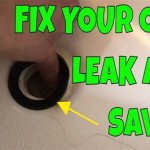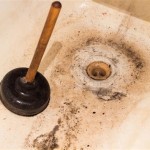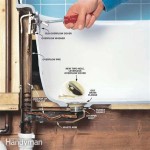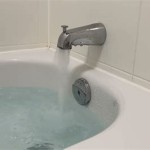Does Vinegar Unclog Bathtub Drains? A Comprehensive Guide
A clogged bathtub drain is a common household problem that can range from a minor inconvenience to a significant disruption. The gradual accumulation of hair, soap scum, skin flakes, and other debris can restrict water flow, eventually leading to a complete blockage. While various commercial drain cleaners are available, many homeowners prefer exploring natural and less harsh alternatives. Vinegar, a readily available household staple, is often touted as a potential solution for unclogging drains. This article will delve into the effectiveness of vinegar for this purpose, exploring its mechanism of action, appropriate methods for using it, its limitations, and alternative approaches to consider.
The active ingredient in most commercially available vinegar is acetic acid, typically present in a concentration of around 5%. This acidity is what gives vinegar its cleaning and dissolving properties. When dealing with a clogged drain, the hope is that the acetic acid will break down the organic matter causing the blockage, allowing it to be flushed away with water. The effectiveness of vinegar, however, depends largely on the nature and severity of the clog.
Understanding How Vinegar Works on Drain Clogs
Vinegar's ability to unclog drains stems from its acidic properties. Acetic acid can react with certain components of drain clogs, primarily those composed of organic materials. Soap scum, a common culprit in bathtub drain blockages, is formed from the reaction of hard water minerals with soap. Vinegar can help dissolve the soap scum, breaking it down into smaller, more easily flushed particles. Similarly, hair, while not directly dissolved by vinegar, can become entangled with soap scum and other debris. By dissolving the surrounding matrix, vinegar can help loosen the hair, making it more susceptible to being dislodged.
It's important to note that vinegar is not a strong acid. It is significantly weaker than the acids found in commercial drain cleaners. Therefore, it is unlikely to dissolve large clumps of hair or heavily compacted debris. Its effectiveness is generally limited to relatively minor clogs or as a preventative measure to maintain drain cleanliness.
Furthermore, vinegar's action is enhanced when combined with other methods. For instance, using vinegar in conjunction with hot water or a plunger can significantly improve its efficacy. The heat from the water helps to soften the clog, while the plunger creates pressure that aids in dislodging the broken-down debris.
Step-by-Step Guide to Using Vinegar to Unclog a Bathtub Drain
Before using vinegar to unclog a bathtub drain, it is crucial to ensure that the drain is not chemically treated in any way. Mixing vinegar with certain chemical drain cleaners can create hazardous fumes. If a chemical drain cleaner has been used recently, thoroughly flush the drain with water before proceeding.
The simplest method involves pouring one cup of baking soda down the drain, followed by one cup of vinegar. The combination of baking soda and vinegar creates a chemical reaction that produces carbon dioxide gas. This fizzing action can help to loosen the clog. Allow the mixture to sit in the drain for at least 30 minutes, or preferably overnight, to maximize its effectiveness.
After the waiting period, flush the drain with hot water. The hot water helps to wash away the loosened debris. If the drain is still slow, repeat the process. In some cases, multiple applications may be necessary to completely clear the clog.
For more stubborn clogs, a plunger can be used in conjunction with the vinegar treatment. After allowing the vinegar and baking soda mixture to sit, fill the bathtub with a few inches of water. Place the plunger over the drain opening, ensuring a tight seal, and plunge vigorously for several minutes. The pressure created by the plunger can help to dislodge the remaining debris.
Another variation involves boiling water. After pouring the baking soda and vinegar mixture down the drain and allowing it to sit, carefully pour a kettle of boiling water down the drain. The boiling water can further help to break down the clog and flush it away. Exercise caution when using boiling water to avoid burns.
Limitations and Alternatives to Vinegar for Drain Cleaning
While vinegar can be effective for minor clogs, it has limitations. For severe blockages, particularly those caused by large accumulations of hair or foreign objects, vinegar may not be sufficient. In such cases, alternative methods or professional help may be required.
One alternative is using a drain snake or auger. This tool consists of a flexible metal cable that can be inserted into the drain to break up or retrieve the clog. Drain snakes are available in various lengths and sizes, and they can be particularly effective for removing hair clogs.
Another option is to use a wet/dry vacuum cleaner. This method involves removing the drain cover and using the vacuum cleaner to suck out the clog. This can be effective for removing loose debris or small objects that are causing the blockage.
In cases where these methods fail, it may be necessary to call a professional plumber. Plumbers have specialized tools and expertise to diagnose and resolve complex drain problems. They can also identify and address any underlying issues that may be contributing to the clogs, such as pipe damage or improper drainage.
Preventative measures are also essential for maintaining clear drains. Regularly flushing the drain with hot water can help to prevent the buildup of soap scum and other debris. Using a drain strainer to catch hair and other large particles can also significantly reduce the likelihood of clogs. Periodically using a vinegar and baking soda treatment as a preventative measure can also help to keep drains clean and free-flowing.
In summary, while vinegar can be a useful and environmentally friendly option for unclogging bathtub drains, its effectiveness is limited. It is best suited for minor clogs or as a preventative measure. For more severe blockages, alternative methods or professional help may be necessary. Consistent preventative maintenance is crucial for keeping drains clear and avoiding future problems.

How To Clear A Clogged Drain With Vinegar 10 Steps

Unclog Drains Naturally With Baking Soda And Vinegar Mom 4 Real

How To Unclog A Bathtub Drain With Hot Water Baking Soda And White Vinegar

How To Clear A Clogged Drain With Vinegar 10 Steps

How To Unclog Your Drain With Baking Soda And Vinegar Fast Easy

How To Clear A Clogged Drain With Vinegar 10 Steps

Why You Should Never Use Baking Soda And Vinegar To Clean Clogged Drains

One Simple Trick To Unclog Your Tub Drain The Creek Line House

Quick Tips To Unclog A Bathtub Drain Without Chemicals Plumbing Authority Inc

How To Unclog A Bathtub Drain With Standing Water Naturally
Related Posts








